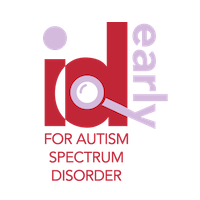Autism Diagnosis Education Project

ADEP was initiated in 2008 to increase early and timely access for families to a comprehensive diagnostic evaluation for children with concerns in language and social development, including ASD. Through community-based diagnostic partnerships a process and a structure enable parents to obtain a timely diagnosis and targeted early intervention supports and services, as needed.
In the project community-based diagnostic partnerships form unique teams between a primary care provider/medical professional and early interventionists/early childhood professionals, through Ohio's Help Me Grow Early Intervention program.
The purpose of the project is to
- Decrease the wait time for family access to evaluation
- Decrease the age of identification within Early Intervention, facilitating targeted intervention
- Equip and support local primary care providers/medical professionals in understanding and diagnosing autism in young children
Current leadership of the project is through the Ohio Department of Children & Youth (DCY), OCALI, and Akron Children's Hospital (ACH) aligning efforts with current best practices and research related to earlier identification and the Supporting Ohioans with Autism Recommendations.

ID Early Through ADEP Teams
The Center for the Young Child provides curated sets of courses at four different levels in order to support professionals and teams working towards the earlier identification of autism in young children across Ohio. At level four, there is a focus on building a team to enhance earlier identification efforts through the systematic use of validated screening tools and in some cases conducting formal evaluations in partnership with community partners. Professionals and teams are equipped to consider the needs, practices, and coordination within a community forming an enhanced diagnostic or Autism Diagnosis Education Project (ADEP) team.
Goals
On average, the time from parents' initial concern to a clinical diagnosis of autism spectrum disorder (ASD) can be up to two years in Ohio. In 2020, children born in 2016 were 1.6 times as likely to be identified by 48 months (about 4 years) of age nationwide (U.S. Department of Health & Human Services: Key Findings - PDF)
Over the lifetime of the project the goals have been:
- Reduce the time from initial family concern to diagnosis from 18 months to less than 9 months.
- Reduce the time from initial contact with Help Me Grow Early Intervention to diagnosis to within 90 days.
- Lower the age of diagnosis from 36 months to 30 months old
Additionally, the goals of the project have expanded to include the following:
- In areas without active participation, increase awareness, knowledge, and understanding of early indicators of autism
- Expand the use of standardized, early autism screening tools among EI professionals
- Engage local teams in quality improvement planning and data informed decision-making
Process
When concerns about autism arise, ADEP links local early intervention professionals, primary care providers/medical professionals, and families to complete a comprehensive multidisciplinary evaluation.
The entire process happens locally; families do not need to drive to regional diagnostic centers instead, interacting with primary care providers/medical professionals in their home communities or via telehealth (where available).
A comprehensive evaluation should include the following:
- Health, developmental, and behavioral histories
- Physical examination
- Developmental, psychoeducational evaluation(s)
- Determination of a diagnosis (including the use of standardized tools) needed for early intervention services
- Assessment of the family's knowledge of ASD, challenges, coping skills, and resources/supports
- Lab work, if necessary
- 1. Family suspects young child has ASD
- 2. Family contacts Help Me Grow Early Intervention (EI)
- 3. Local EI team completes evaluations and assessments
- 4. Child starts intervention, if needed/eligible
- 5. EI team refers child to local medical partner
- 6. Medical partner completes a medical evaluation
- 7. Medical partner rules in/out diagnoses of autism
- 8. Child receives necessary targeted early intervention support through local EI Providers
Results
Over the project's lifetime, community-based diagnostic partnerships have provided families with access to an early and timely diagnostic option. Through time, dedication, and commitment ADEP teams have lowered the average age of diagnosis in Ohio to 30 months (about 2 and a half years) of age, compared to the national average age of 4 years old within participating counties.
Connect & Explore
ID Early for Autism Spectrum Disorder was developed to help professionals and teams find consistent information, resources, and training promoting earlier identification. Explore the various resources to enhance professional and community growth.
For questions or more information about , ID Early, ADEP, and its statewide implementation or interest in a collaborative program evaluation for your team focused on exploring community needs, developing a quality improvement plan, and identifying autism earlier please contact: Maggie_Gons@ocali.org.
Additionally, Family Support Specialists will soon be available in several regions across the state to help families navigate earlier identification options and resources. To find out more, contact Brittany_Prince@ocali.org